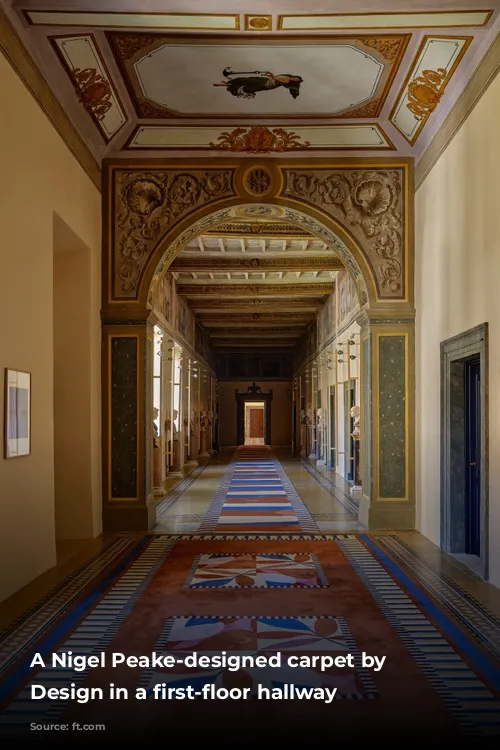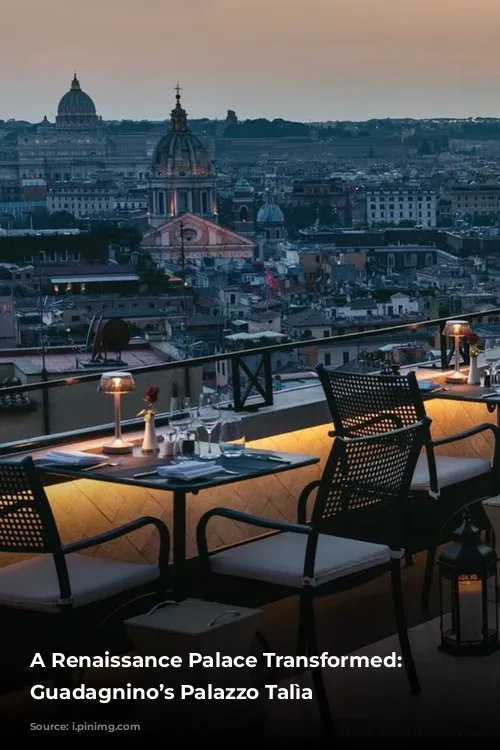Rome, the Eternal City, is brimming with history and art, and Palazzo Talìa, a new luxury boutique hotel, embodies this rich tapestry. Nestled within the historic Collegio Nazareno, a 16th-century scholastic institution, the hotel seamlessly blends the old and the new, creating an unforgettable experience for discerning travelers.
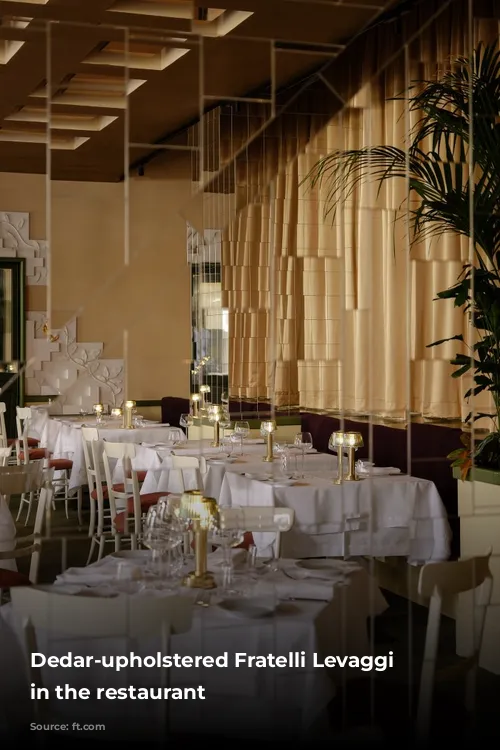
A Legacy of Learning and Luxury
The Collegio Nazareno, one of the oldest educational institutions in Rome, served as a haven for underprivileged boys and orphans, later welcoming the children of the city’s elite. This grand palazzo, with its imposing facade and soaring interior spaces, has witnessed centuries of history, surviving both Napoleon’s occupation and the horrors of World War II. Today, its top floor houses the headquarters of the Partito Democratico, adding another layer to its rich narrative.
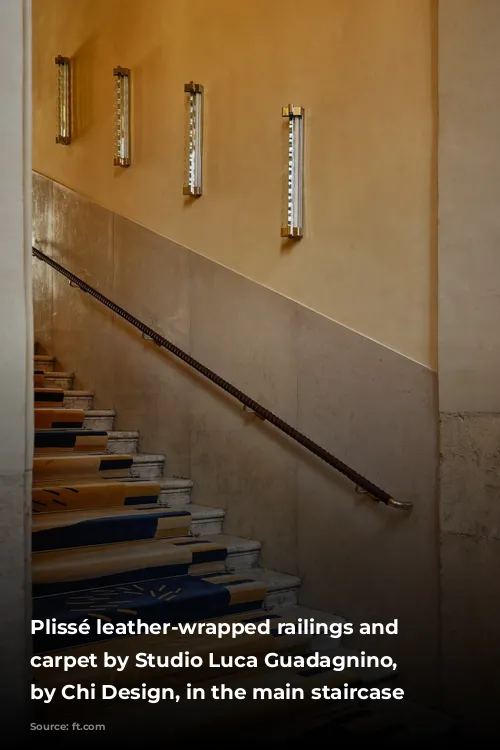
The Director’s Vision: A Blend of History and Contemporary Style
Film director Luca Guadagnino, renowned for his exquisite visual aesthetics in films like “Call Me by Your Name” and “Suspiria,” has breathed new life into the Collegio, transforming it into the luxurious Palazzo Talìa. Guadagnino, known for his meticulous attention to detail, has brought his distinctive design sensibility to the hotel’s public spaces. His design practice, Studio Luca Guadagnino, has created a captivating blend of history and contemporary style, seamlessly weaving together the past and present.
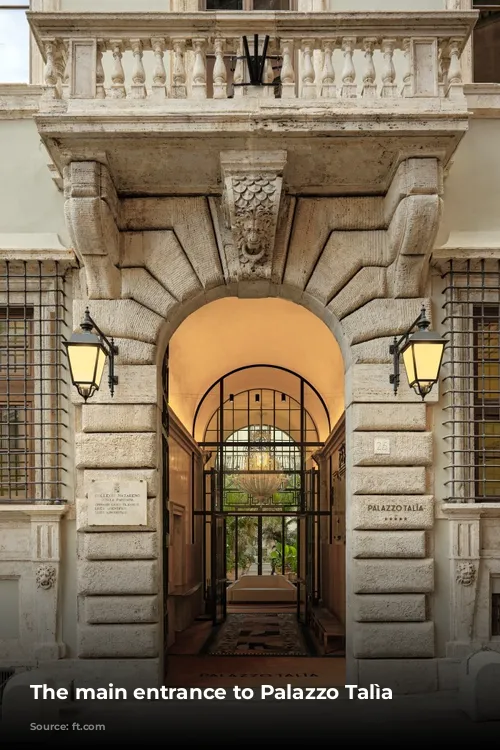
From Grand Salons to Serene Spas: A Symphony of Senses
Palazzo Talìa is not just a hotel; it’s an immersive experience. The hotel’s signature suite, along with its common spaces, including the soaring sitting rooms, verdant courtyard, restaurant, and subterranean spa, have been meticulously designed by Studio Luca Guadagnino. Guadagnino’s goal was to create a space that exudes beauty, comfort, and softness, inviting guests to “diffuse themselves” in the sensual ambiance.
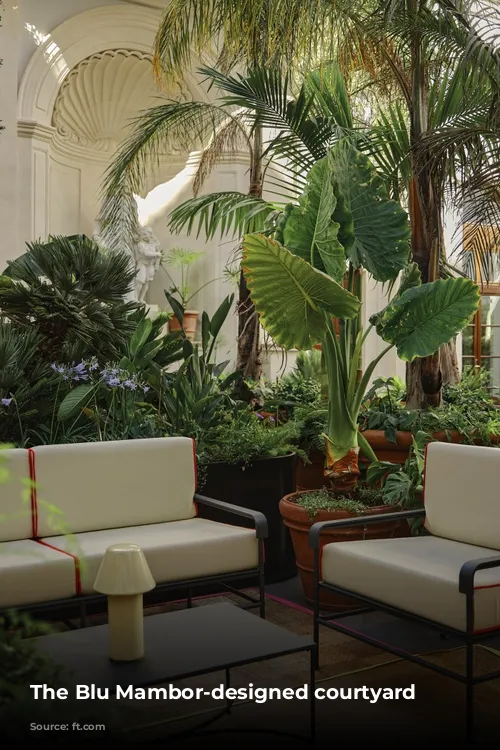
A Tactile Feast for the Senses
Every detail in Palazzo Talìa speaks to Guadagnino’s obsession with texture and materiality. The custom-designed carpets, with their rich hues of blue, pink, rust, and green, invite guests to sink their feet into luxurious comfort. The bar’s walls, adorned with small blown-mirror panels, reflect watery abstracts of the 17th-century ceiling frescoes, creating a shimmering, jewel-like effect. The monumental staircase, its railings wrapped in plissé leather, begs to be touched, its rich bordeaux red articulated in delicate, hand-crafted folds.
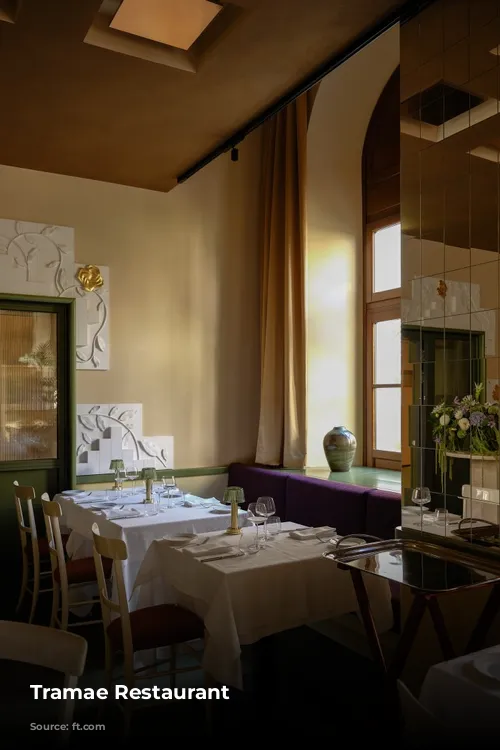
Maximalism Meets Minimalism: An Intimate Experience
Guadagnino, known for his bold design choices, prefers “intimate” over “exclusive” when describing the hotel’s atmosphere. The design, though maximalist, is executed with the discipline of minimalism, ensuring that the pleasure of each element is not overshadowed by an excess of details.
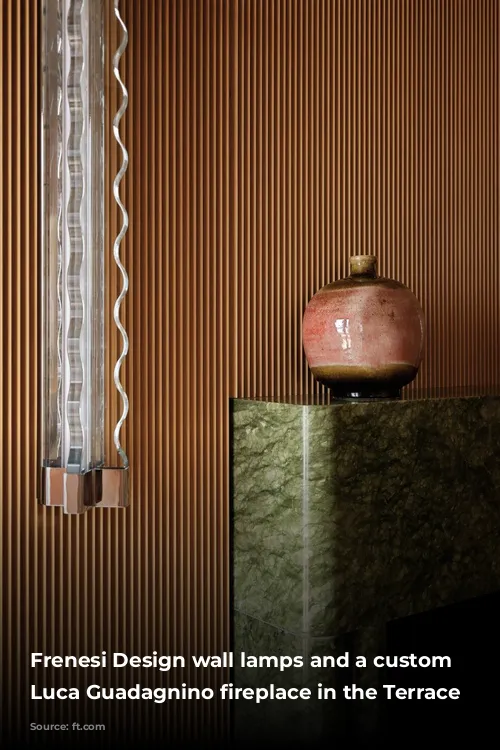
A Dialogue Between Past and Present
A central theme of Palazzo Talìa is the dialogue between the past and present. This is beautifully illustrated by the hotel’s centerpiece, a museum-quality 1940s chandelier designed by Venetian artist Napoleone Martinuzzi. This striking piece, nearly 3 meters tall, hangs from the cross-vaulted ceiling in the reception foyer, a bold yet harmonious juxtaposition against the late-renaissance architecture.
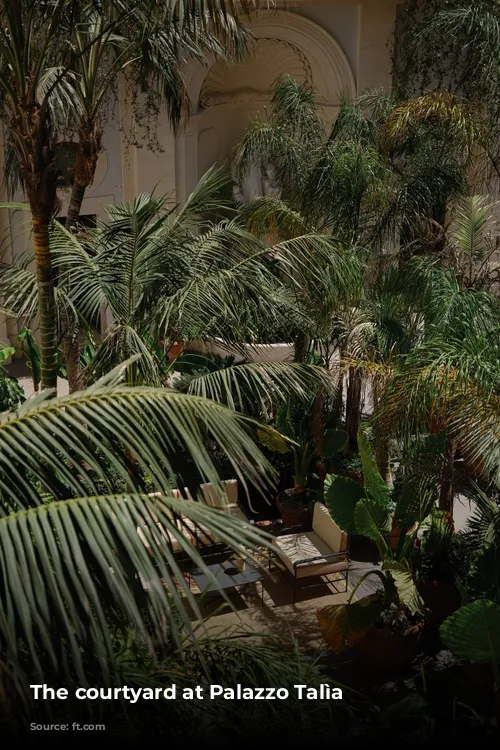
A Celebration of the Handmade
Palazzo Talìa is a testament to the artistry of craftsmanship. Much of the furniture throughout the hotel is one-off, created by Studio Luca Guadagnino. Even the few pieces that weren’t custom-designed, like the Gae Aulenti Locus Solus chairs at the concierge desk, are special editions. The hotel’s unique pieces, including the massive six-meter sage-green double sofa and the custom-designed Frenesi wall sconces, are a testament to the Studio’s dedication to quality and originality.
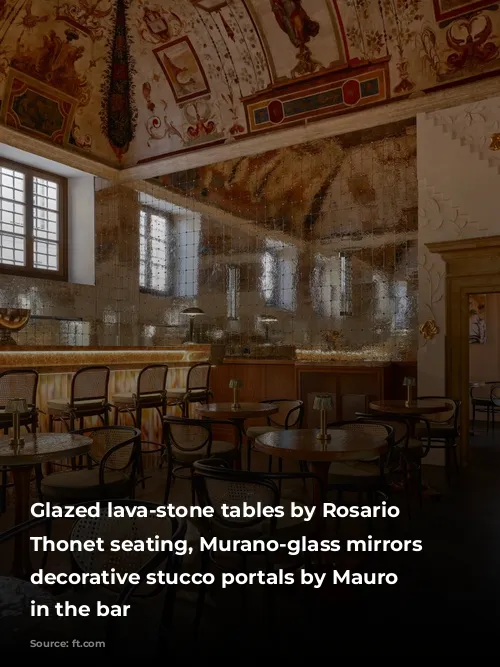
A Tropical Oasis in the Heart of Rome
The hotel’s courtyard, designed by Roman landscape designer Blu Mambor, is a tranquil escape from the city’s hustle and bustle. The courtyard, filled with lush potted palms, including two soaring Kentia palms from Sicily, creates a tropical Mediterranean oasis within the heart of Rome. The restaurant, with its earth-colored curtains and menu of Italian classics with international twists, provides a perfect setting for enjoying a delicious meal. The spa, with its caldarium pool, cedar sauna, and glistening metal-patina tiles, offers a sanctuary for relaxation and rejuvenation.
The Aula Magna: A Grand Finale
The hotel’s crown jewel is the Aula Magna, the enormous first-floor salotto that was the Collegio’s assembly hall. This magnificent space, overlooked by an 18th-century gallery restored to its original gilt-edged pistachio splendor, is a testament to the Studio’s ability to blend the historic with the contemporary. Two groupings of low, blocky chairs upholstered in ice-pink and orange bouclé, a handful of ceramicised lava-stone tables, and two custom rugs create a sense of effortless elegance.
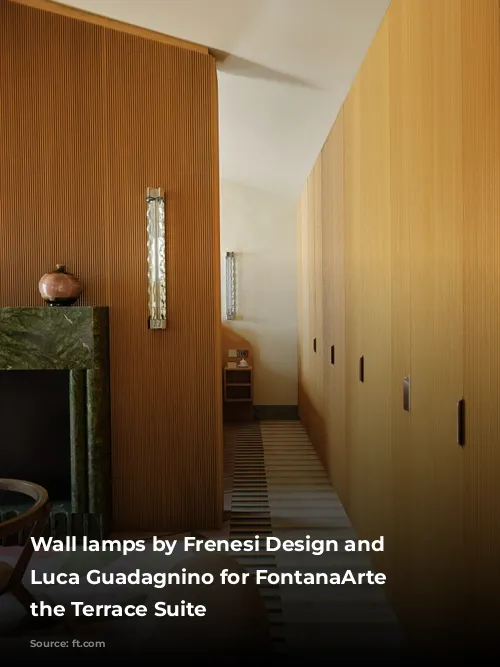
A Distillation of Design: The Legacy of Palazzo Talìa
Palazzo Talìa is a culmination of Studio Luca Guadagnino’s design philosophy. Guadagnino, in his own words, sees the project as a “distillation” of his work to date, showcasing the studio’s ability to create spaces that are both bold and intimate, luxurious yet grounded in history.
Palazzo Talìa, a harmonious blend of the ancient and the modern, invites guests to experience the timeless elegance of Rome, reimagined for the 21st century.
